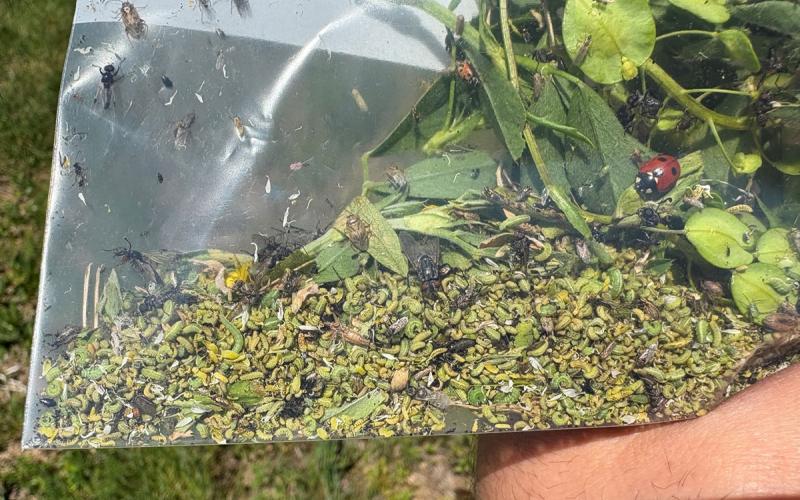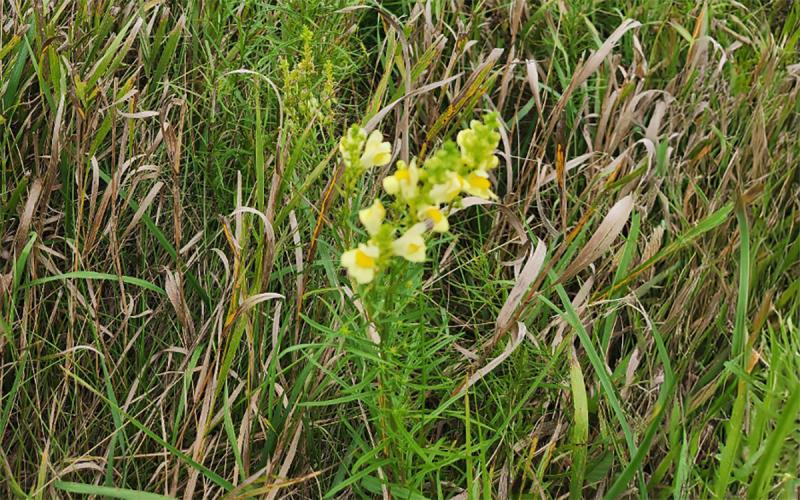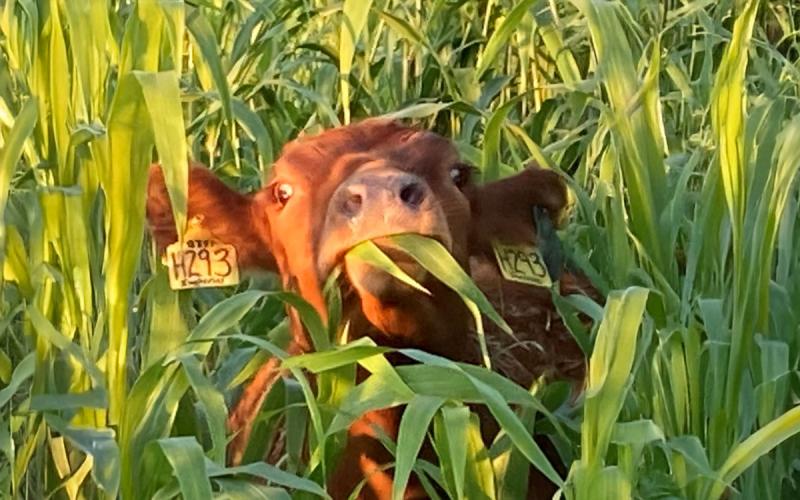Written collaboratively by Patrick Wagner, Adam Varenhorst, Philip Rozeboom, and Bradley McManus.
Originally Submitted: June 12, 2023
Blister beetles have been observed on alfalfa this past week in South Dakota. For alfalfa that was recently cut, the blister beetles do not pose a risk until the second cutting is approaching. However, for the first cutting, alfalfa needs to be scouted for blister beetles prior to harvest. Scouting for blister beetles needs to continue prior to harvest for the remainder of the growing season. Adult blister beetles feed on leaves and blossoms and contain a toxic chemical called cantharidin. They pose a health threat to livestock that consume bales of alfalfa that contain whole or partial blister beetle bodies. Hay that is infested with blister beetles can cause mouth sores, digestive issues, kidney damage, and death in livestock.
Blister beetles got their name because their blood contains cantharidin, which causes blisters if it comes in contact with skin. The beetles release this toxic chemical through “reactive bleeding” to defend themselves from predators. Cantharidin is also released if the beetles are crushed, which is a problem when feeding infested hay to livestock. If an animal ingests enough blister beetles, it can lead to sickness or even death. Cantharidin can remain active for months in blister beetle carcasses.
Identification
Blister beetles have one generation per year. Adults can be up to 1 inch long, have a soft, elongate body, and vary in color and size based on species. A unique characteristic of blister beetles is that their thorax (middle body segment) is narrower than both the head and abdomen.
The only species that has been observed so far during 2023 has been the ashgray blister beetle (Figure 1). Other common species in South Dakota that show up later include the black (Figure 2), immaculate (Figure 3), striped (Figure 4), and margined (Figure 5) blister beetles.
Ashgray
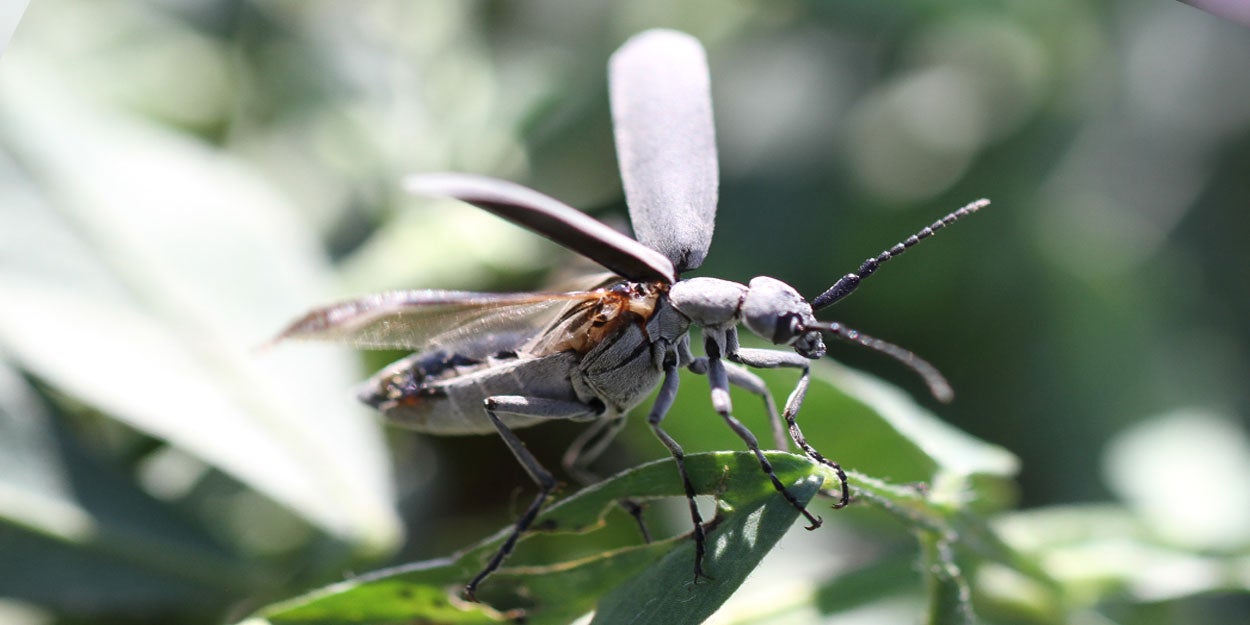
Black
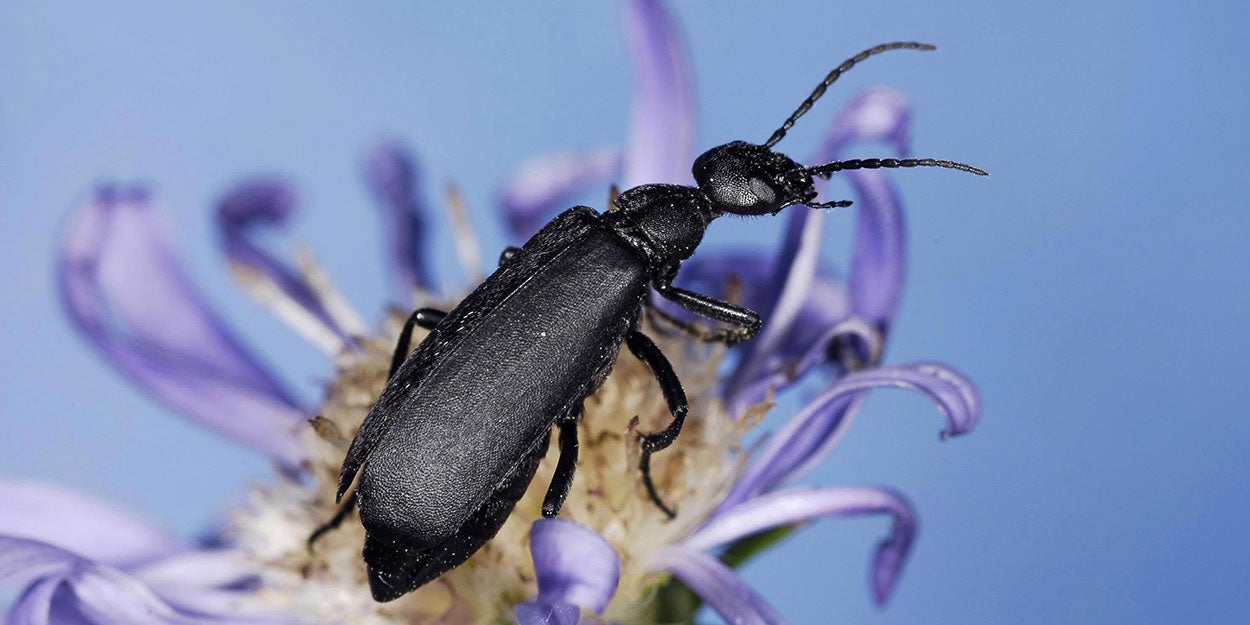
Immaculate
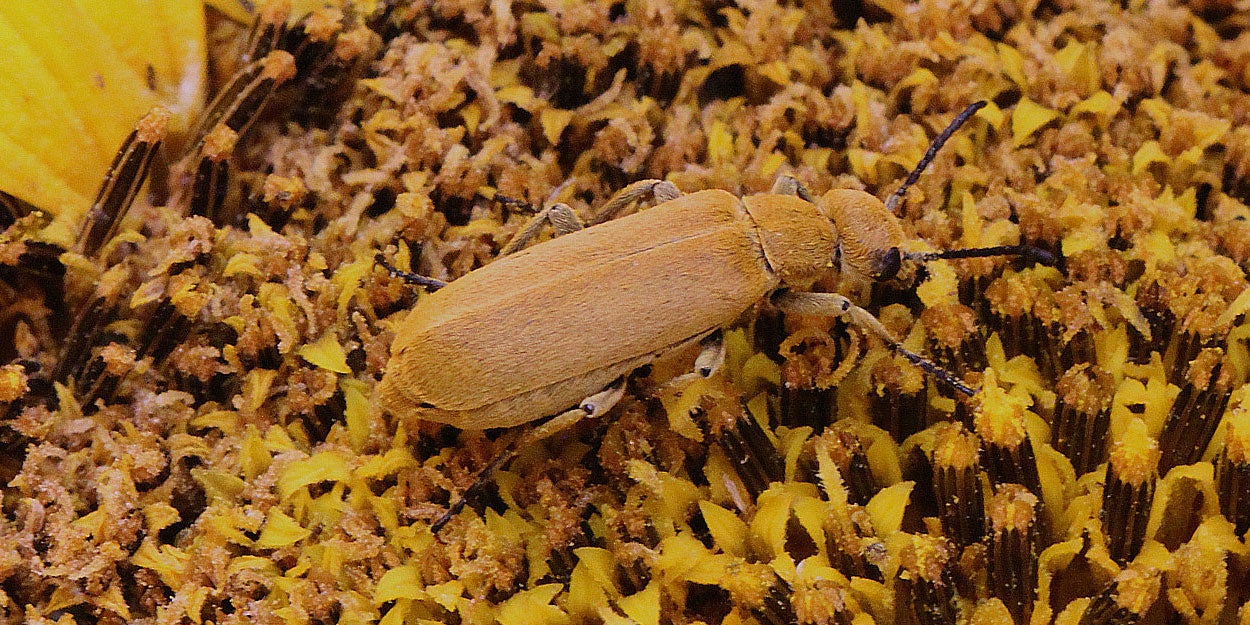
Striped
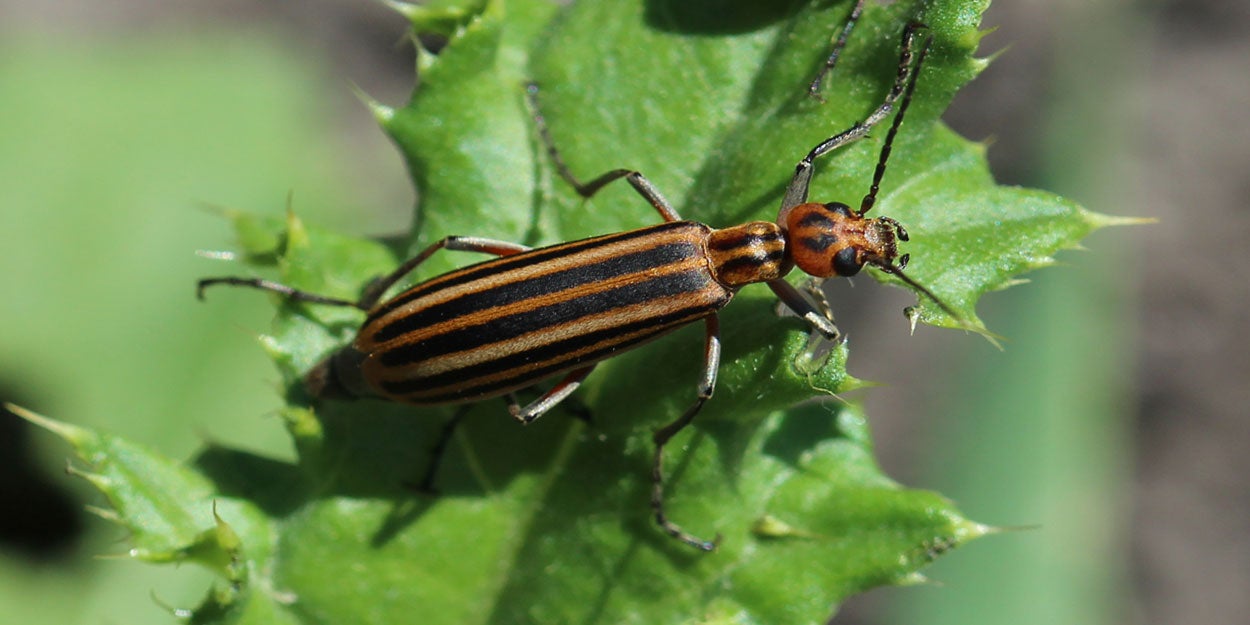
Margined
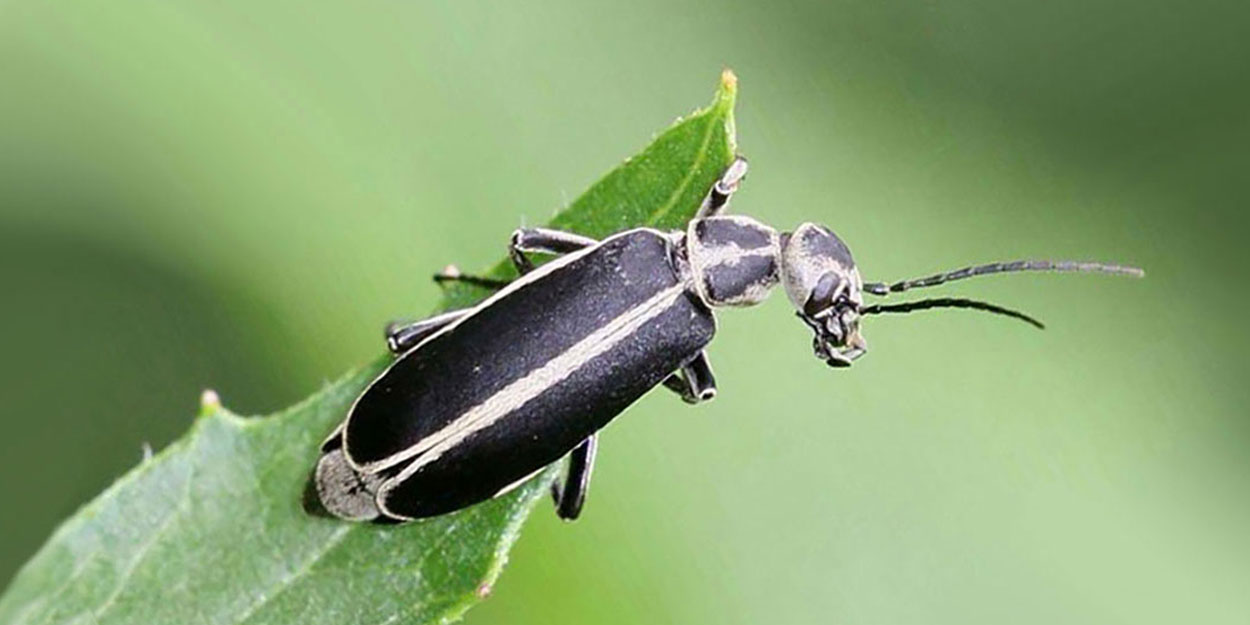
Management
It is important to scout alfalfa fields for blister beetles prior to each cutting. Second and later cuttings are at higher risk of infestation, because blister beetles are more abundant by early to mid-summer. However, blister beetles can also be an issue for the first cutting if it is delayed due to a cool spring or other weather conditions.
Due to their predation on grasshopper eggs as larvae, blister beetles are more likely to be present in areas where large grasshopper populations were observed during the previous year. Consider management if you notice large numbers of blister beetles in the field.
Insecticide applications are not recommended, as it kills the beetles but does not remove them from the hay. Dead blister beetles remain toxic, and spraying may increase the number of beetles per bale.
The alternative is to cut alfalfa prior to peak bloom, as blister beetles are attracted to the blossoms. It is also important to allow the cut alfalfa to dry fully before raking, so that the beetles have time to vacate the plants prior to baling. If alfalfa is infested, it is also important to mow or windrow the hay and not crimp it. Crimping increases the likelihood of crushed beetles remaining in the hay. From personal observations, many blister beetles will escape from mowed alfalfa within 3 to 6 hours.
When selling hay, ensure that blister beetles aren’t present or notify the buyer of any potential for infested bales. Horses have a particularly high sensitivity to cantharidin, so it is important that they don’t consume infested hay. In addition, avoid feeding hay from field edges to horses, because blister beetle numbers are typically highest in those areas.
